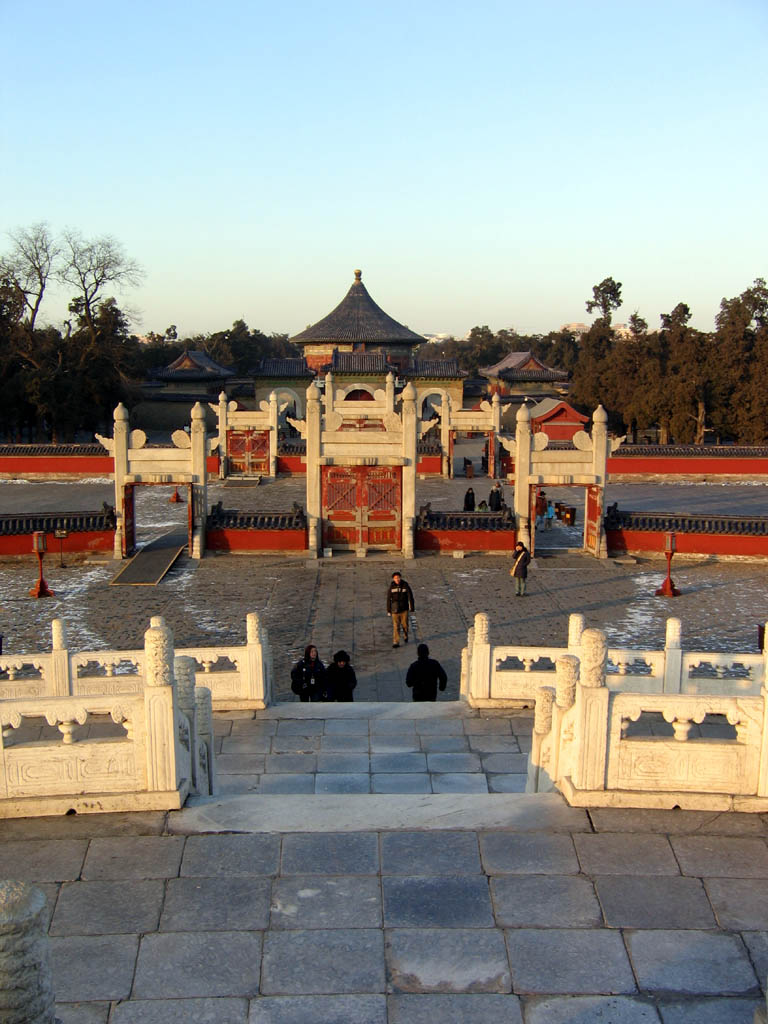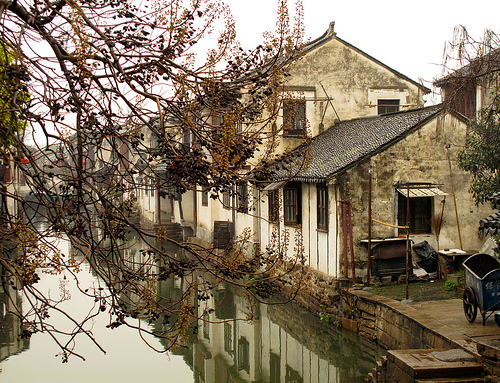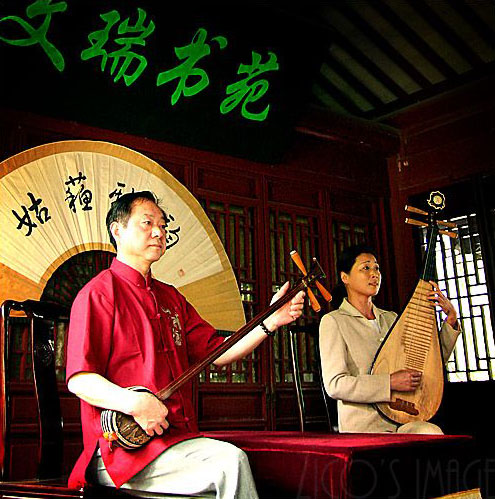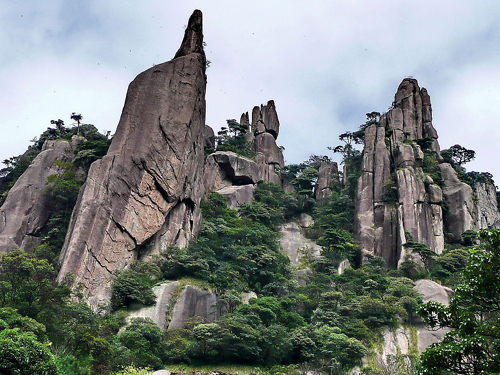The Temple of Heaven

The Temple of Heaven, literally the Altar of Heaven (simplified Chinese: 天坛; pinyin: Tiāntán) is a complex of Taoist buildings situated in southeastern urban Beijing, in Xuanwu District. The complex was visited by the Emperors of the Ming and Qing dynasties for annual ceremonies of prayer to Heaven for good harvest. It is regarded as a Taoist temple, although Chinese Heaven worship, especially by the reigning monarch of the day, pre-dates Taoism.
The temple complex was constructed from 1406 to 1420 during the reign of the Yongle Emperor, who was also responsible for the construction of the Forbidden City in Beijing. The complex was extended and renamed Temple of Heaven during the reign of the Jiajing Emperor in the 16th century. The Jiajing Emperor also built three other prominent temples in Beijing, the Temple of Sun in the east (日坛), the Temple of Earth in the north (地坛), and the Temple of Moon in the west (月坛). The Temple of Heaven was renovated in the 18th century under the Qianlong Emperor.
In 1914, Yuan Shih-kai, then President of the Republic of China, performed a Ming prayer ceremony at the temple, as part of an effort to have himself declared Emperor of China.
The Temple of Heaven was inscribed as a UNESCO World Heritage Site in 1998 and was described as “a masterpiece of architecture and landscape design which simply and graphically illustrates a cosmogony of great importance for the evolution of one of the world’s great civilizations…” as the “symbolic layout and design of the Temple of Heaven had a profound influence on architecture and planning in the Far East over many centuries.”
According to Xinhua, in early 2005, the Temple of Heaven underwent a 47 million yuan (5.9 million USD) restoration in preparation for the 2008 Beijing Summer Olympics and the restoration was completed on May 1st, 2006.
The Temple of Heaven is a very popular park for exercising, and particularly for practicing taiji bailong ball, which is a paddleball variation of Tai Chi.
The Temple grounds covers 2.73 km² of parkland, and comprises three main groups of constructions, all built according to strict philosophical requirements:
The Hall of Prayer for Good Harvests (祈年殿) is a magnificent triple-gabled circular building, 32 metres in diameter and 38 metres tall, built on three levels of marble stone base, where the Emperor prayed for good harvests. The building is completely wooden, with no nails.

The Imperial Vault of Heaven (皇穹宇) is a single-gabled circular building, built on a single level of marble stone base. It is located south of the Hall of Prayer for Good Harvests and resembles it, but is smaller. It is surrounded by a smooth circular wall, the Echo Wall, that can transmit sounds over large distances. The Imperial Vault is connected to the Hall of Prayer by the Vermilion Steps Bridge, a 360 meter long raised walkway that slowly ascends from the Vault to the Hall of Prayer.

The Circular Mound Altar (圜丘坛) is the altar proper, located south of the Imperial Vault of Heaven. It is an empty circular platform on three levels of marble stones, where the Emperor prayed for favorable weather. It was built in 1530 by the Jiajing Emperor and rebuilt in 1740.

More Photos below (click to enlarge):
Vocabulary
天坛 tiāntán temple of heaven tian-tan n.
地坛 dìtán temple of earth di-tan n.
日坛 rìtán temple of sun ri-tan n.
月坛 yuètán temple of moon yue-tan n.









